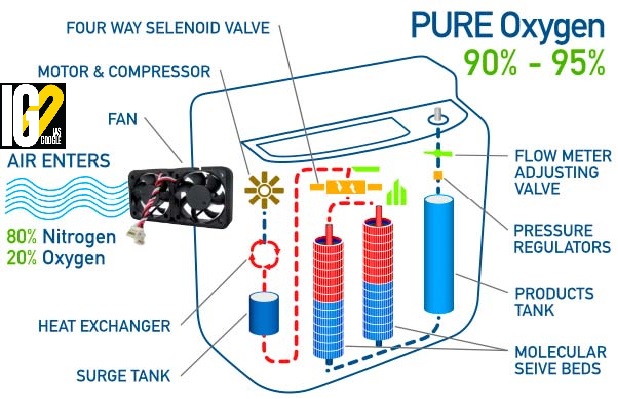- Home
- Prelims
- Mains
- Current Affairs
- Study Materials
- Test Series
18th Oct 2021
CHINA TESTED ‘NUCLEAR CAPABLE HYPERSONIC MISSILE’ IN AUGUST, SAYS REPORT
China’s military has carried out its first-ever test of a “nuclear capable hypersonic missile”, according to a report in October. 17.
Highlights:







- The missile circled around the globe before speeding towards its target, demonstrating an advanced space capability.
- The missile missed its target by about two-dozen miles.
- As it flew over the South Pole, the test would pose a big challenge for the U.S. military because its missiles defence systems are focused on the northern polar route.
- HSTDV is a scramjet vehicle with a capability to travel at six times the speed of sound.
- The scramjets are a variant of a category of jet engines called the air-breathing engines.
- Hypersonic speeds are those which are five times or more than the speed of sound.
- The Defence Research and Development Organisation started this initiative in the early 2010s.
- The Indian Space Research Organisation has worked on the development of the technology and has successfully tested a system in 2016.
- DRDO has conducted a test of indigenously developed Hypersonic Technology Demonstrator Vehicle (HSTDV) in June 2019.

- It can be used for launching satellites at low cost.
- This test augurs well for the development of air-breathing in technologies in India.
- A ramjet is a form of airbreathing jet engine that uses the engine’s forward motion to compress incoming air without a centrifugal compressor.
- A ramjet-powered vehicle, requires an assisted take-off like a rocket, to accelerate it to a speed where it begins to produce thrust.
- It works most efficiently at supersonic speeds around Mach 3 (3,700 km/h).
- Scramjet is a variant of a ramjet airbreathing jet engine
- Here, the airflow through the engine remains supersonic, or greater than the speed of sound.
- Scramjet relies on high vehicle speed to compress the incoming air forcefully before combustion.
- The scramjet is composed of three basic components:
- A converging inlet, where incoming air is compressed.
- A combustor, where gaseous fuel is burned with atmospheric oxygen to produce heat.
- A diverging nozzle, where the heated air is accelerated to produce thrust.
- The “Hunar Haat” was organised as a part of series of 75 "Hunar Haat", to be organised across the country under "Azadi Ka Amrit Mahotsav" to celebrate 75 years of India’s Independence.
- Aim: To promote and preserve precious traditional skills of artisans and craftsmen where they will display live how India’s traditional exquisite and elegant indigenous handmade products are made.
- “Hunar Haat” has become a “credible platform” to strengthen “Swadeshi-Swavlamban” and “Vocal for Local” and providing market to indigenous products of traditional artisans and craftsmen.

- This complex arrangement of atoms, such molecular networks are called frameworks.
- The basic units go on fitting together to form large networks, like a wire mesh fence.
- The network is constructed by repeated additions of a molecule with symmetry. A few such networked sheets, when stacked one over another, form a functional 2-D entity.
- Uses for these Covalent Organic Frameworks (COFs) take advantage of their stability, large surface area, controlled pore sizes, and tunable chemical environments.
- The frameworks can be designed to act as sieves in separating out molecules of a specified size.
- The smallest whiff of a toxic gas could be sensed - in an industrial environment, or in airline baggage.
- They are also suitable for both storing energy (as capacitors) and for conducting it (along membranes in fuel cells).
- Metal Organic frameworks (MOFs) are structured like COFs but have metals in complexes with organic entities.
- The choice of metals is wide, from Beryllium to Zinc, though relatively abundant metals are preferred for economic and environmental reasons.
- For gas storage, as in the case of hydrogen storage in fuel cells;
- In catalysis, where they replace very expensive metals;
- In sensors; and in drug-delivery – anti-cancer and other drugs with severe side effects can be trapped in the porous confines of MOFs.
- Zeolites are highly porous, 3-D meshes of silica and alumina.
- Zeolites are hydrated, crystalline microporous aluminosilicates, whose structures enclose channels and/or cavities of molecular dimensions.
- It is made of silicon, aluminum and oxygen that form a framework with cavities and channels inside where cations, water and/or small molecules may reside.
- They are often also referred to as molecular sieves.
- Zeolites were introduced in 1954 as adsorbents for industrial separations and purifications. Because of their unique porous properties.
- In nature, they occur where volcanic outflows have met water. Synthetic zeolites have proven to be a big and low-cost boon.
- They are synthetic frameworks of silica and alumina with nanometer-size pores that are rigid and inflexible.
- Beads of one such material, zeolite 13X, about a millimeter in diameter, are packed into two cylindrical columns in an oxygen concentrator.
- The chemistry here is tailored to the task of separating oxygen from nitrogen in air.
- Being highly porous, zeolite beads have a surface area of about 500 square meters per gram.
- At high pressures in the column, nitrogen is in a tight embrace with the zeolite. Interaction between the negatively charged zeolite and the asymmetric nucleus (quadrupole moment) of nitrogen causes it to be preferentially adsorbed on the surface of the zeolite.
- Oxygen remains free, and is thus enriched.
- Air has 78% nitrogen, 20.9% oxygen and smaller quantities of argon, carbon dioxide, etc. Once nitrogen is under arrest, what flows out from the column is 90%-plus oxygen.
- After this, lowering the pressure in the column releases the nitrogen, which is flushed out, and the cycle is repeated with fresh air.
- The polyethylene of plastic bags is made from repeating units of the ethylene molecule.
- In biological systems, proteins are 1-dimensional polymers of amino acids.
- The UFill proposition has been launched in 65 cities across India and will soon be launched across the country.
- UFill is a digital customer experience which delivers on BPCL’s promise of ensuring that their customers have complete control over Time, Technology and Transparency as part of their fuelling experience.
- It is aimed to improve customer’s turn-around time (TAT) at fuel outlet and increase transactional transparency, thereby providing enhanced retail like experience.
- Its functionality does not need any App download.
- It is payment App agnostic (i.e. customer can use any payment app already downloaded on his / her phone like GPay, PayTM, PhonePe etc).
- It offers real time QR and voucher code through SMS and is accepted at all BPCL Fuel Stations where the functionality is enabled.
- If the amount paid in advance is partially used, the balance amount is immediately refunded to the bank account of the customer.
- If not used within 48 hours, the money paid in advance is automatically refunded to the bank account from where debited.
- Provides the customer with control of fuelling as well as touch less pre-payment solution. with the dispensing unit getting automatically preset for the value of fuel paid for by him/her in advance and eliminates any manual intervention at the point of sale.
- Thus, no need to check zero before fuelling or final reading, the dispensing unit will automatically dispense the exact quantity of fuel.
- It is effective across the stakeholder chain including Dealers, Managers and Driveway Salesmen (DSM).
- Nihang is an order of Sikh warriors, characterized by blue robes, antiquated arms like swords, spears, and decorated turbans surmounted by steel quoits.
- The characteristics of Nihang’s came from the sanskrit word ‘nihshank’ which means ‘without fear, unblemished, carefree and indifferent to worldly gains and comfort’.
- The order can be traced back to the creation of the Khalsa by Guru Gobind Singh in 1699.
- The word Nihang, occurs in a hymn in the Guru Granth Sahib, where it alludes to a fearless and unrestrained person.
- Any person irrespective of caste, creed or religion having unshorn hair and following Sikh traditions can become Nihang.
- He must remember five banis, perform daily ablutions by waking up at 1 am and perform morning and evening prayers.
- The baptized Sikh willing to become a Nihang and fulfilling conditions is given robes and weapons similar to the ones carried by Guru Gobind Singh when he founded the Khalsa.
- Nihang’s had a major role in defending the Sikh Panth after the fall of the first Sikh rule (1710-15).
- They took control of the religious affairs of the Sikhs at Akal Bunga in Amritsar.
- They did not consider themselves subordinate to any Sikh chief and thus maintained their independent existence.
- At Akal Takht, they held the grand council of Sikhs and pronounced the resolution Gurmata.
- Their clout came to an end after the fall of Sikh Empire in 1849, when the British authorities of Punjab appointed a manager for the administration of the Golden Temple in 1859.
- Nihang’s observe the Khalsa code of conduct in its strictest sense. They do not profess any allegiance to an earthly master.
- Instead of saffron they hoist a blue Nishan Sahib flag atop their shrines.
- They use the slogans ‘chhardi kala’ (forever in high spirits) and ‘tiar bar tiar’ (state of ever preparedness) for unforeseen events.
- Sukhnidhan (treasure of comfort) is a popular drink of Nihang’s containing grounded almonds, cardamom seeds, poppy seeds, black pepper, rose petals, melon seeds and small amount of cannabis.
- Shaheedi deg (sacrament of martyrdom) was the drink with a higher dose of cannabis in it. It was taken (while) battling enemies.

- It carries out surveillance of important bacterial, viral, and parasitic infections of zoonotic and transboundary pathogens in India, including the North-eastern part of the country.
- Use of existing diagnostic tests and additional methodologies, mandated for the surveillance and for understanding the spread of emerging diseases.

- India has slipped to the 101st position among 116 countries from its 2020 ranking (94).
- Eighteen countries, including China, Brazil and Kuwait, shared the top rank with GHI score of less than five.
- The level of hunger in India was marked as alarming with its Global Hinger Index (GHI) score decelerating from 38.8 in 2000 to the range of 28.8 – 27.5 between 2012 and 2021.
- GHI Score is calculated on the basis of four indicators namely:
- Undernourishment
- Child wasting (share of children aged under five who are wasted i.e., those having low weight for their height.
- Child stunting (children aged under five who are having low height for their age.
- Child mortality (mortality rate of children aged under five).
- GHI Score is calculated on the basis of four indicators namely:
- The share of wasting among children in India rose from 17.1 per cent between 1998-2002 to 17.3 per cent between 2016-2020.
- Neighboring countries like Nepal (76), Bangladesh (76), Myanmar (71) and Pakistan (92) were ranked ahead of India.
- India has shown improvement in other indicators such as:
- Under-5 mortality rate
- Prevalence of stunting among children
- Prevalence of undernourishment owing to inadequate food
- The Global Hunger Index (GHI) is a tool designed to comprehensively measure and track hunger and undernutrition at global, regional, and national levels.
- The GHI determines hunger on a 100-point scale, where 0 is the best possible score (no hunger) and 100 is the worst.
- Each country’s GHI score is classified by severity, from low to extremely alarming.
- Poshan Abhiyaan: It is a flagship programme to improve nutritional outcomes for children, pregnant women and lactating mothers.
- Public Distribution System
- Antyodaya Anna Rozgar Yojana
- Mid-day Meal Scheme
- Mahatma Gandhi National Rural Employment Guarantee Act
- Food Security Act which aims to provide subsidized food grain to up to 75 percent of the rural population and 50 percent of urban households.
- The government of India challenged India’s poor ranking in the Global Hunger Index 2021 citing that the methodology used is devoid of ground reality and facts.
- Publishing agencies based their assessment on the results of a ‘four question’ opinion poll, which was conducted telephonically by Gallup.
- The Government has questioned the poll-based assessment, that has increased the value of ‘proportion of population undernourished’ from 14.0% for the previous period 2017-19 to 15.3% for the latest period 2018-20.

- The Larsen Ice Shelf is a long ice shelf in the northwest part of the Weddell Sea, along the east coast of the Antarctic Peninsula.
- It is a series of shelves that occupy distinct embayment’s along the coast.
- From north to south, the segments are called Larsen A (the smallest).
- Larsen B, and Larsen C (the largest).
- Further south, Larsen D and the much smaller Larsen E, F and G.
- The breakup of the ice shelf began in 1990s with the collapse of Larsen B in 2002.
- A large section of the Larsen C shelf broke away in July 2017 to form an iceberg known as A-68.









 Latest News
Latest News
 General Studies
General Studies